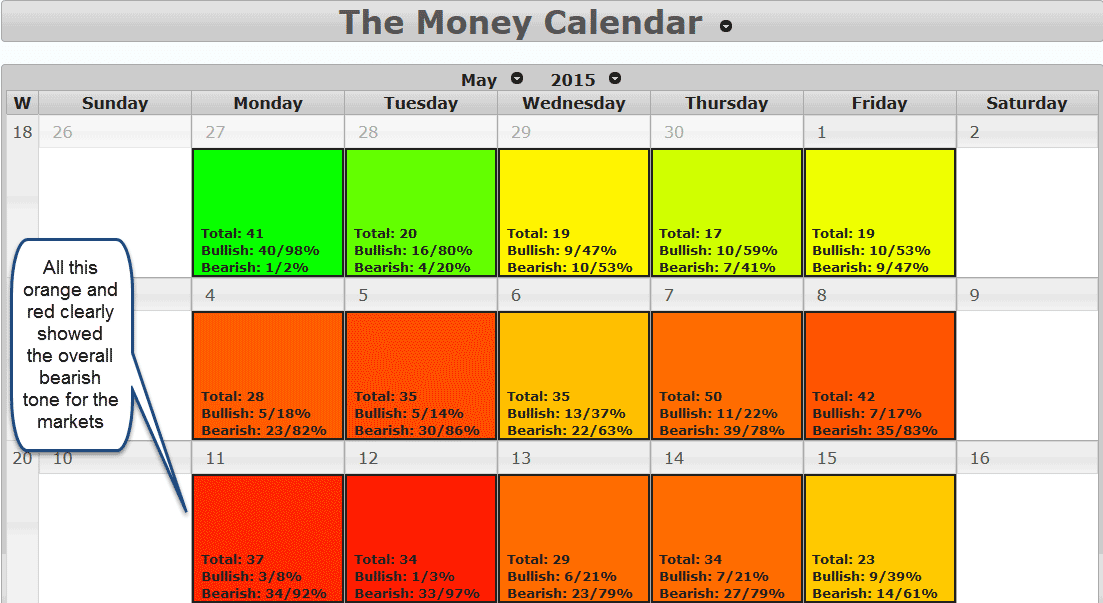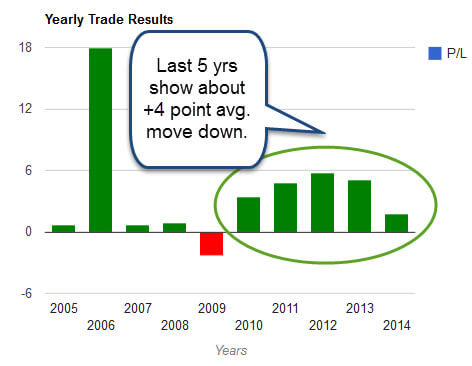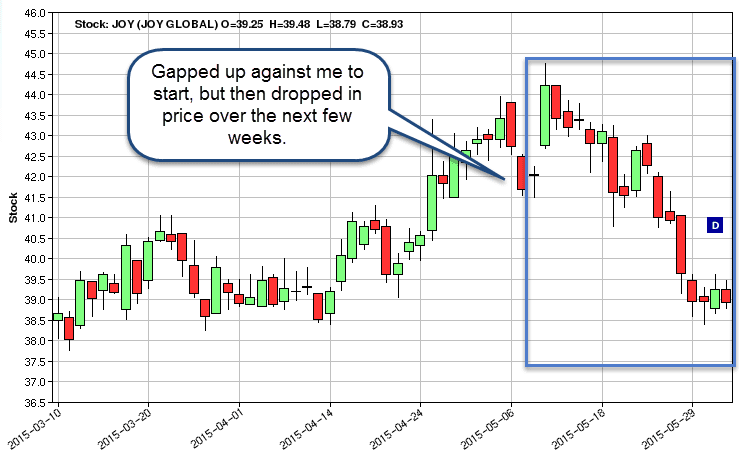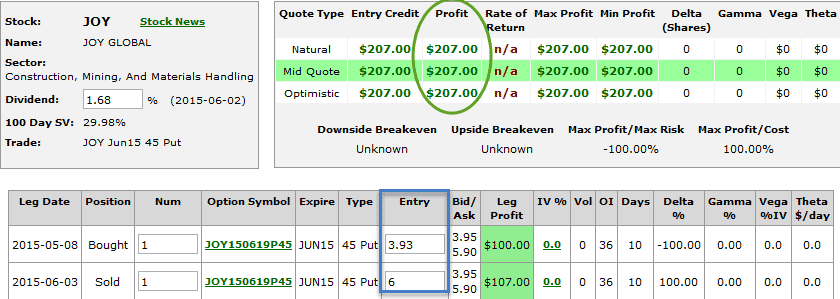When you see the ticker JOY, do you think of the holiday season? Do you hear the song "Joy to the World?"
Well, we know it is definitely not the holidays, but our recent trade on Joy Global Inc. (NYSE: JOY) did produce a nice gift.
JOY is a manufacturer and servicer of mining equipment in the extraction industries: better known as minerals and ores.
To some, it's a bit of an unloved and scary investment sector, given the ups and downs in the prices of these commodities, particularly coal and copper.
But as I've said before, I'm not really concerned over the movement of whole sectors. What we're focused on are the moves our stock picks make over a historical 10-year period.
In today's case, you'll see exactly why it's the stock price patterns that matter the most and yield the best returns possible... in the form of a 50+% return on investment (ROI).
Let's get started...
Our Set-Up Screen Burned Bright Red...
Here is what my Money Calendar looked like for the period of April 27 to May 15. As I looked at the data, I noticed a "bearish" tone for the overall markets, and started to do some digging into the data.

In looking through stocks listed in the calendar, Joy Global Inc. jumped out when it showed a potential move down in price to the tune of $3.84 over a 10-day span:

To take the data further, here is a graphic representation of what JOY has done for the past 10 years:

With the stock price trending down, I'd be thinking about a "short." To trade a stock to the downside without using options you would have to "short" the stock. To short a stock means to sell it without first owning it. Your brokerage would basically have to borrow the stock from another account to make this happen.
The intent on a stock trade like that is to later buy the stock at a lower price than you sold it, to replace what you borrowed, and then pocket the difference. That kind of play is extremely risky, because the stock could run to a much higher price than where you sold it, and who knows how high it could go before you buy it back.
Now, here's what I liked on the Yearly Trade Results graph...
The last three to five years show consistency in the price movement, with the exception of one anomaly year in 2006.
The last five years on JOY show an average profit move of about $4 or 4 points, which is pretty much in line with the $3.84 shown.
Here's How We Boost Our Return... With Less Risk
Instead of shorting the stock, the trade used was to go long, or buy put options.
Here is the trade, looking at the option pricing the night before the start date of the trade. Keep in mind that the option could be higher or lower on the open of that trade date.

The price shown to open is called the mid-price, or the price one can try and buy in the spread (the difference between the bid and the ask price of the option).
Look at the chart below to see how far the stock went down in price:

The trade immediately gapped up in price. The trade management rule is to watch and evaluate ending the trade if it reaches a 50% loss in value. The value of the options trade never made it to a 50% loss, so the trade had a chance to work to the downside before stopping out. And to the downside it went!
The target price to the downside was $38.17. It did not quite hit that price before I decided to consider the trade closed. It still produced a solid ROI, even if I did decide to end this prior to the target price. I stopped this trade because an earnings report was slated to come out the day after when I chose to end the trade.
[epom key="ddec3ef33420ef7c9964a4695c349764" redirect="" sourceid="" imported="false"]
Earnings reports, as you know, can affect an options trade either for good or bad. I have seen and had both good and bad experiences with earnings over my years as a trader. This case study worked, and the last thing I wanted to do was risk giving back any or all of the profits achieved because of the earnings or because of traders' reaction to the earnings.
Let's Jump for JOY with Our 53% Return!
The cost, or risk, in the trade originally presented is -$3.93. Looking at the mid-price on the JOY June15 45P, the case study shows a profit potential of +$2.07 or +$207 per contract.

The ROI on this case study scenario comes out to +52.7% (+53%).
The compulsion once the trade is off is to track it and see if you could have made more money if you just held on. I would encourage you to focus on your existing trades and/or look for upcoming new trades instead.
One possibility is the stock drops even further after the earnings and you kick yourself, thinking you should have held on.
The next time you face this situation, you could end up talking yourself into hanging on through earnings... but then they could disappoint and wipe out your trade.
Experience the JOY of this trade and focus on existing and upcoming trades!
Opa! The turmoil in Europe over whether Greece will be forced out of the Eurozone has been a growing concern for investors as the crisis has worsened in recent weeks. But this is a perfect opportunity for us to take hold of. Here's the profitable trade we're all going to make...
About the Author
Tom Gentile, options trading specialist for Money Map Press, is widely known as America's No. 1 Pattern Trader thanks to his nearly 30 years of experience spotting lucrative patterns in options trading. Tom has taught over 300,000 traders his option trading secrets in a variety of settings, including seminars and workshops. He's also a bestselling author of eight books and training courses.



